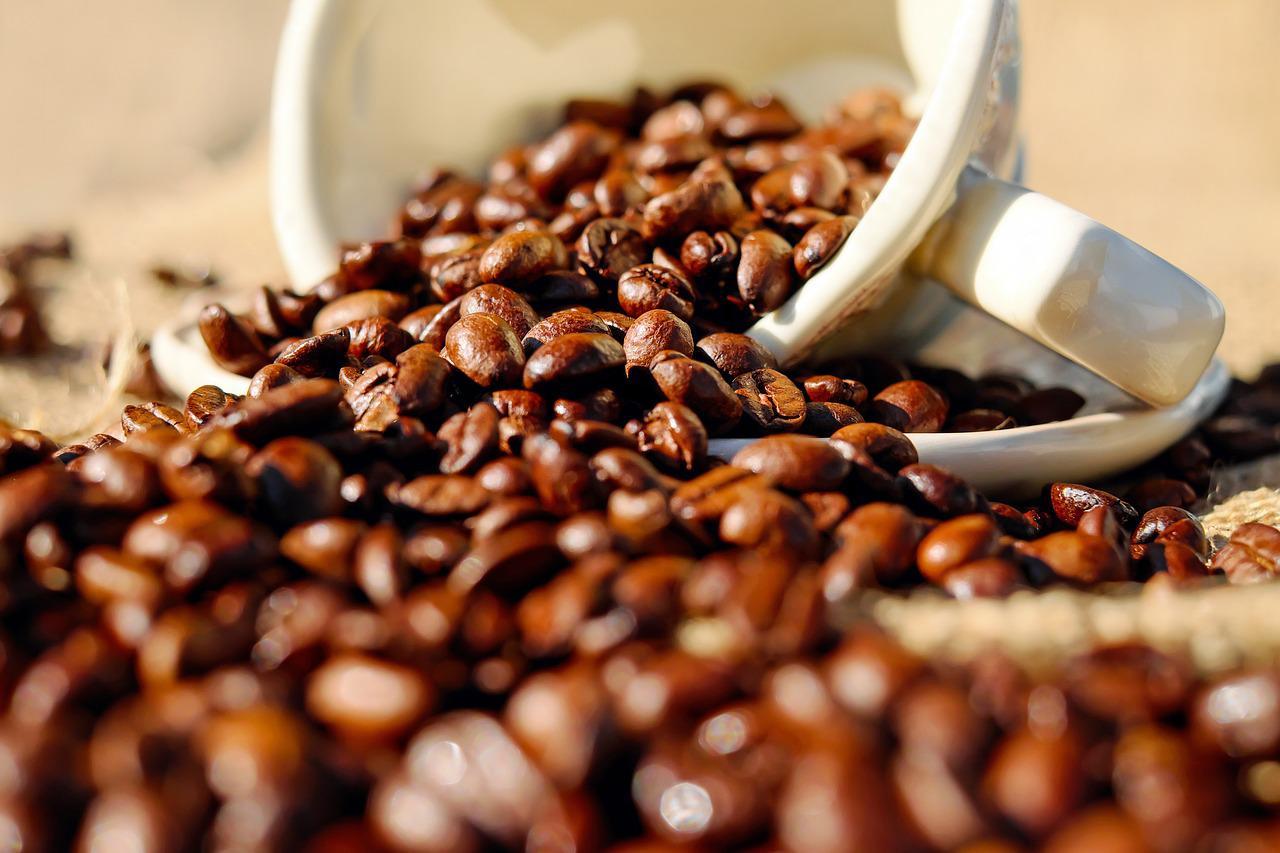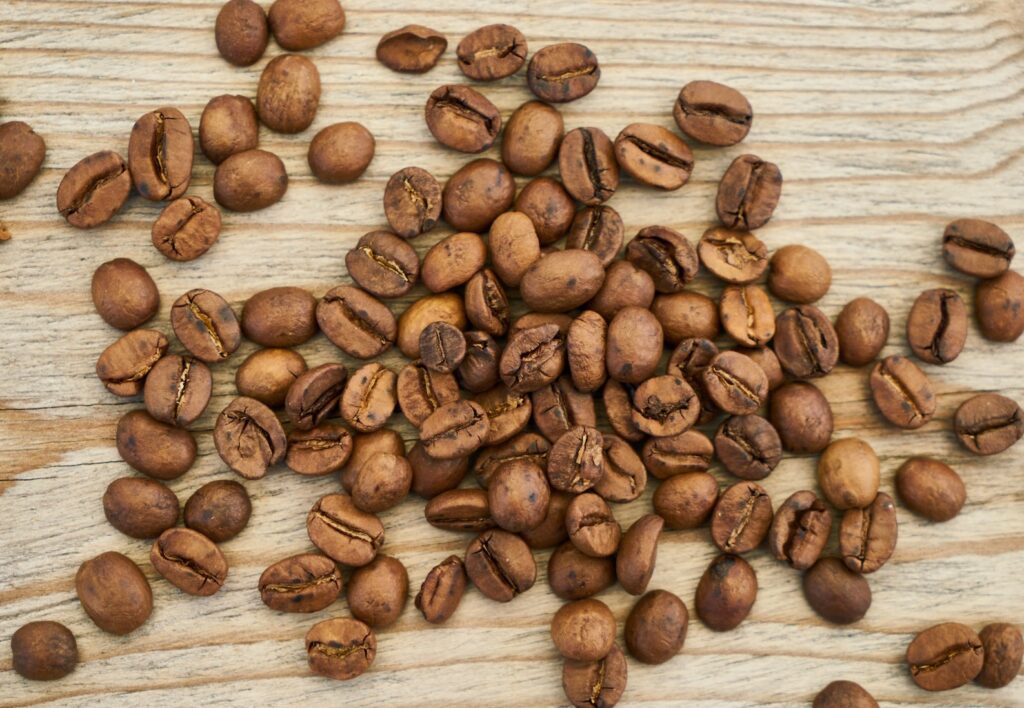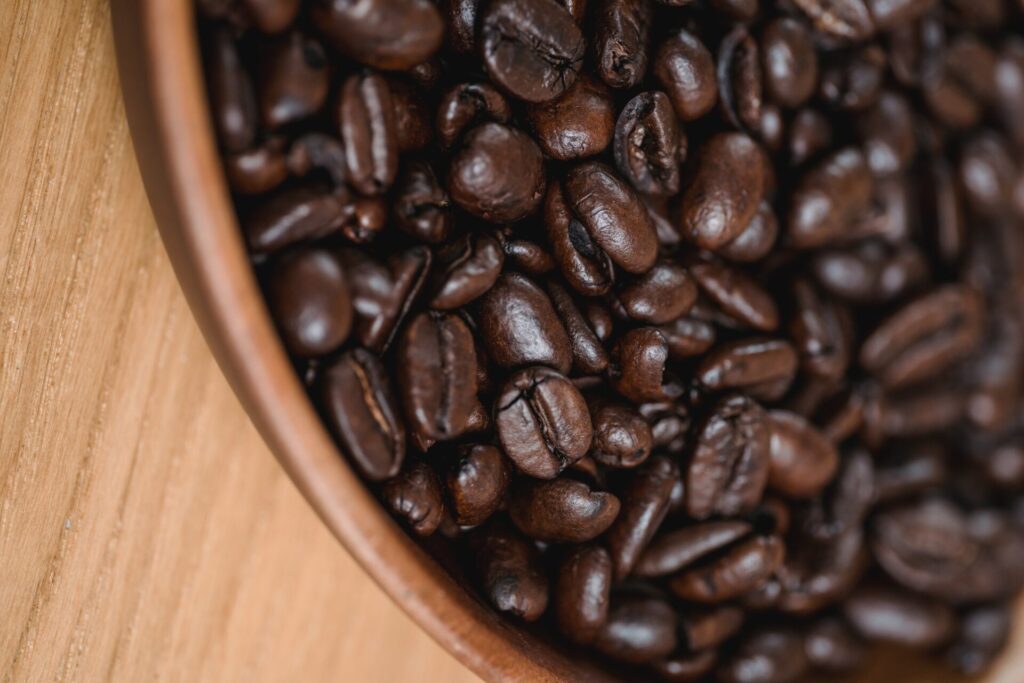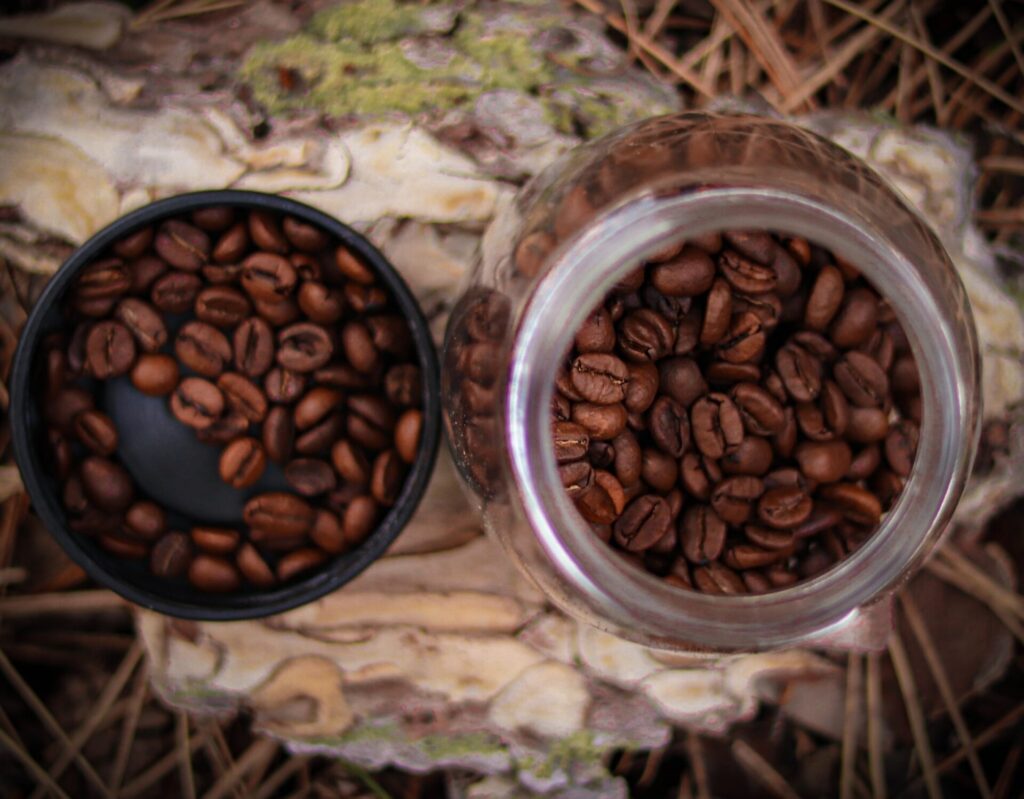
One Hundred Coffee is reader-supported, and some products displayed may earn us an affiliate commission. Details
Why Do We Need to Roast Coffee Beans at Home?
Home coffee roasting as a pro is not a difficult skill, as some people may think. Reading this post will help you master it completely.
Coffee beans are the seeds of the coffee tree cherries. Each cherry normally has two beans with flat sides facing each other. When soaked in hot water as raw or “green,” coffee beans provide nothing in the way of coffee taste and aroma.

Who is this for?
This book is for coffee lovers eager to roast their own beans at home. It covers everything from bean selection to roasting techniques and flavor control. Ideal for beginners and hobbyists who want to deepen their appreciation of coffee by understanding and crafting their perfect roast.The final effect of roasting on the bean
Roasting green coffee causes a plethora of chemical changes, the formation and breakdown of hundreds of chemicals, and the development of wonderful tastes when the beans are crushed and steeped in hot water, as the roaster hopes.
Roasting color and size change

In general, roasting causes beans to change color from green to yellow, tan to brown, and black, among other things. Almost twice in size. Reduce your density by half. Sweetness is gained and then lost. Increase acidity. It creates numerous scented compounds. They make a loud popping sound as they discharge pressurized gases and water vapor.
To conclude, roasting is used to enhance the taste of coffee’s soluble chemistry. The flavor of brewed coffee is determined by dissolved solids, whereas the fragrance is determined by dissolved volatile aromatic chemicals and oils. The body of coffee is composed of dissolved solids, oils, and suspended particles, typically fragments of bean cellulose.
Is roasting coffee beans an art or a science?
Roasting is the process of burning green coffee beans to release their flavors. This is a difficult, nuanced task, and the master roaster must have a thorough grasp of both the beans and his equipment. The barista must also understand roasting to pick and use his beans effectively. ROASTING is a linear cooking skill, but it is full of variables that can make a big difference in the flavor of your coffee. Roasting experts have mastered the technique. If you want complete control over your coffee experience, home roasting is the way to go.
Try home coffee roasting as a fascinating experience.
Unless you harvest your coffee, which is unrealistic for most of us, roasting completes the cycle of coffee engagement. It’s also amusing, and it allows you to witness the alchemy of transforming these microscopic fruit seeds known as coffee beans into true, sweet-smelling treasure chests full of aromatic, rich oils.
Home Coffee Roasting

Roasting at home does not imply that you will never buy roasted coffee again. You just may develop a new appreciation for the artisans and their roasting prowess.
You will never forget your first roasting experience, whether you decide to become your own roast master for life or just an occasional roaster who buys already-roasted coffee beans.
You will know the following by the conclusion of reading this post:
- Mechanism and the scientific explanation of roasting and types of roasters
- Differentiating the characteristics of six different roasts and kinds of roasting
- The benefits and drawbacks of stovetop roasting, drum roasting, and fluid-air roasting, as well as how to utilize them.
- The method of home roasting and how to decide if it’s suitable for you.
The Definition of a Good Coffee Bean Roaster

The term “roaster” refers to both the craftsman and the machine that roasts the beans. There are several variants available, each with a different capacity (ranging from 6 Kg to 100 kg weight), power source (gas or electricity), and design. A rotational cylindrical drum oven with direct gas heating is the most popular form of roaster. Small-scale roasting takes 12 to 25 minutes at temperatures ranging from 190 to 230°C using this sort of roaster.
The heat necessary to roast coffee is the same as the heat with which industry professionals dispute over how to accomplish it. Some followers utilize low heat to extract moisture from the green beans until pyrolysis, or the first crack. The beans are then finished till they reach pyrolysis, or the first crack. The beans are then finished to the desired roast by raising the heat. Others use high heat early on, searing the beans like a steak, then moderate heat after the initial crack, because the beans should be at a high enough internal temperature to finish on their own.
What types of commercially roasted coffee are available on the market?
“The Roasting Heat Debate”
There are numerous common commercial coffee roasts. You should be able to discover the same recognizable terminology no matter where you buy your beans, whether it’s a major, well-known chain or a boutique store. Regional variants exist, and some businesses have developed their brand and names. However, this list might serve as a valuable reference for the roast degree as a classic definition you are likely to meet.
The original French roast has a strong roasted flavor. It’s almost like super dark bread with a black crust, where the darkness can be tasted in every mouthful. It goes beyond caramel. It contains fiery charcoal undertones, similar to grilled food. French-roasted beans are frequently lustrous because their oils have surfaced and covered their exterior.
Espresso roast coffee
The most prevalent Italian classic espresso roast, as the name implies, is an Espresso roast, which is darker than a Vienna roast. Any lighter roast would likely make espresso taste harsh because of the high-pressure extraction procedure used by an espresso maker, which emphasizes acidity. This roast, for which beans are frequently roasted for a longer period and at lower temperatures, offers exceptionally balanced tastes.
Cinnamon roast coffee
This light, popular roast is synonymous with coffee found at donut shops and breakfast nooks. But, before you dismiss it as a commodity or supermarket roast, remember that some of the greatest beans from the country’s top roasters are roasted light. Because this roast is so exposing, even the smallest taste flaw—roasted light—is revealed. And also even little taste flaws, like a sour note that a darker roast may mellow out, become obvious.
Vienna roast coffee
Vienna roast is named after the coffeehouses in Vienna, Austria, and is somewhat darker than Full City. Sweating should begin to appear visually as small oil droplets on still-brown beans. Caramel notes should prevail in the tongue, but not at the expense of varietal individuality. To put it another way, a Sumatran coffee roasted to a Vienna should still taste like a Sumatran coffee, although a highly syrupy one.
Full City coffee roast
City or Full City roasts are one or two shades darker and richer in color than Cinnamon roasts, but they still lack a distinct roast flavor. In the best-quality beans, the extended roasting time develops sugars and produces caramel aromas with no loss of acidity. The vast majority of specialty coffee is roasted to City or Full City roast levels.
Italian roast coffee
This roast has more oil and bittersweet aromas that enhance depth at the expense of acidity. Much of the world believes Italian roast to be the standard espresso roast because it is somewhat darker than the espresso roast but has more oil spots on the surface of the beans.
Home Coffee Roasting Color Degree Guide
Professionals use the following categories to indicate the various roast darknesses:
| Light | Medium | Medium Dark | Dark | Darker | Very Dark |
| Cinnamon | American | Full City | Italian | Espresso | French |
| New England | Medium Brown | Vienna | Espresso | Italian | Dark French |
| Light | Brown | Velvet | European | Continental | Italian |
Understanding your roasting options and scale
Small-scale roasting
Heat is transported primarily by convection and conduction in a coffee bean roaster; radiation also plays a role, adding to the roasting process’s stability. • The heating power is controlled by the artisan roaster
The strength of the flow of air around the coffee beans (convection control)
The rotational speed of the drum, which is in direct contact with the beans
After the roasting cycle, the beans are transferred to the cooler, where they are swiftly agitated, and cool air from a blower is pumped through them to prevent further heating.
Industrial roasting
The bulk of large-scale roasters use quick procedures (at 203°C for fewer than 12 minutes) or so-called “flash” methods (85 seconds at 770°C). These approaches prevent the development of smells and tastes, and in the latter instance, the beans must be cooled in water. Put your ground coffee in the freezer to see if it has been roasted this way: if it hardens, it signifies that its moisture content is at the maximum legally permissible level of 5%.
Home Coffee Roasting Techniques:
It is quite feasible to roast green coffee beans at home. Now the question is
What coffees should you choose to start roasting at home?
Green coffee beans are only available from select artisan roasters. When purchasing, keep in mind that green beans will lose between 10% and 25% of their bulk after roasting. Choose beans that are tough and easy to maintain.
Set up a little home roasting for yourself. Forget pan roasting, which, although convenient, is also unsatisfying since the beans require convection and constant mixing.
What are some important home roasting principles to remember and why?
The appeal of home roasting is its ease of starting. All you need is a hot air corn popper, which most people already have at home, and the ability to buy (or persuade your local roasting business to provide) a sample of green beans. Then just put them into the corn popper and start the machine. You can roast coffee in the same way.
The reason behind loving coffee roasting at home:
One reason why few people roast coffee at home for an extended period is expense. Yes, green beans are less expensive than roasted beans. Any savings, however, vanish the instant you understand that roasting mild results in a 10% weight loss, with increasing weight loss as you roast darker. One unsuccessful roast batch wipes away all potential savings, and every home-roast practitioner understands the certainty of such failures. That said, the excitement of the beans’ scent as they begin to crackle, and those moments when, after deciding exactly the correct moment to halt the roast, you behold beans you brought to perfection.
However, some people may also fail to continue in Coffee Roasting at home
That’s when you realize why few people who start home roasting can quit. It’s difficult not to become addicted. It has the enduring enthusiast allure of an activity that encourages ongoing experimentation. Some will succeed, but there may be some undrinkable catastrophes. It’s also entertaining.
Various roasting methods for green coffee beans
There are several ways to roast coffee beans to make an excellent cup of coffee. By altering the bean temperature and roasting time, the master roaster develops a unique combination of tastes and smells for each coffee. Profiles of roasting each green coffee bean have their unique taste and fragrance potential, which is influenced by geography, variety, growing method, and processing. It is the master roaster’s responsibility to realize this potential.
Heating time and temperature
Heating time and temperature do not define the roast on their own, because the roast is more than just cooking and necessitates certain temperature fluctuations known as roast profiles. The artisan roaster might accentuate one feature or another by experimenting with various profiles (onset, acidity, aromas, body, sweetness, finish, etc.).
As a result, two identical green coffee beans might produce two completely distinct brews, one more acidic, the other with more prominent spice smells, a fuller body, and so on. The roaster “interprets” his coffee and imprints his flair on it.
Influencing parameters include level and roasting type.
The appropriate roasting style for each function is critical to consider. Some beans must be roasted differently for different brewing processes, whilst others might do just as well with a single roasting procedure.
First, there’s the bean. Certain types of beans are better suited to specific brewing procedures. In this situation, roasters provide a single roast choice; it is up to the barista to adjust the brewing process based on the coffee picked.
Second, consider the brewing procedure. The technique of preparation influences the taste balance. Depending on the method used, the same coffee will produce bitterness after three minutes of steeping in the case of filter coffee or sourness after a 20-to-30-second extraction in the case of espresso.
Physical and chemical characteristics of green coffee before home coffee roasting
Raw coffee beans are thick, green seeds that contain approximately half carbohydrates in various forms and half a combination of water, proteins, lipids, acids, and alkaloids. Roasters do not need to understand the chemistry of green coffee to roast great coffee, but we have included a description below to acquaint our readers with the major components of green coffee.
Physical Characteristics of Raw Beans

The structure of a raw coffee bean is a three-dimensional cellulose, or polysaccharide, matrix comprising around a million cells. Hundreds of compounds coat the cellulose strands inside that matrix, which the roasting process converts into the oils and soluble substances that influence the flavor of brewed coffee.
The cellulose structure of green coffee accounts for half of its dry weight. The cellulose contributes little to coffee flavor but does trap certain volatile components responsible for scent and increases the viscosity of brewed coffee, enhancing its perceived body.
The sugar content of green beans
Sugars, primarily sucrose, account for 5-10% of a green bean’s dry weight and produce sweetness in the cup. Sucrose also adds to acidity development because caramelization of sucrose during roasting produces acetic acid.
Amount of stored Lipids
Lipids, principally triglycerides, account for roughly 15% of the dry weight of green coffee. Although lipids are not water-soluble, brewed coffee includes some, especially when no filtering or a porous filter is used. Lipids in brewed coffee aid in scent retention and add to the mouthfeel of the beverage. Higher lipid content is often correlated with higher-grade green coffee.
Green coffee content of Proteins
Proteins and free amino acids account for about 11 to 15% of the dry weight of green coffee. During roasting, amino acids and reducing sugars in coffee beans interact in non-enzymatic browning processes known as Maillard reactions. These processes generate glycosylamines and melanoidins, which contribute to the bittersweet flavor, brown color, and odors of roasted, meaty, and baked coffee.
Two main alkaloids are contained:
Alkaloid contents of Caffeine and Trigonelline
Caffeine
Caffeine and trigonelline, two alkaloids that make up around 1% of green coffee’s dry weight, are responsible for much of the bitterness and stimulating characteristics of coffee. It accounts for around 12% of coffee’s bitterness and the majority of its stimulating impact. Because of the lower incidence of insect attack, a coffee tree grown at a high altitude would most likely produce beans with less caffeine.
Trigonelline
Trigonelline contributes significantly to coffee bitterness, generates several aromatic chemicals, and degrades to pyridines and nicotinic acid during roasting. Nicotinic acid is also known as niacin or vitamin B3; a mere 200 g of brewed coffee contains roughly 50 mg of niacin, depending on roast degree; 20 mg of that quantity is likely responsible for coffee’s established anti-cavity impact.
Green Bean Inner Moisture Content
Water should make up between 11 percent to 14 percent of the weight of green coffee. If the moisture content is too low, the bean color fades, nd the cup has hay and straw overtones. Low-moisture beans must be roasted with caution since they are prone to overcooking. Green coffee is susceptible to mold growth and may taste grassy in the cup if the moisture content exceeds 14 percent.
Water Role
Water hinders heat transport within beans, requiring additional heat input to evaporate. Roasting, particularly wet beans d,, demands additional energy in the form of extra time and roasting power.
Considerable percentages of Organic Acids
Organic acids, chiefly chlorogenic acids (CGAs), account for roughly 10% of the dry mass of green coffee. CGAs contribute to the acidity, sourness, astringency, and bitterness of coffee. The increased CGA content of Robusta coffee is most likely responsible for its much higher bitterness. CGAs provide antioxidant advantages to both the coffee bean and the coffee user. Citric, caffeic, malic, acetic, and formic acids are among the other organic acids found in coffee.
Gases and Aromatics stored
The aroma of coffee is provided by volatile aromatic compounds. Green coffee contains over 180 volatile compounds but has no scent. Most aromatic chemicals in coffee are created during roasting, and researchers have discovered over 850 volatiles in roasted coffee thus far.
Physical, chemical, and structural changes after roasting
Color Changes
Although beans lose moisture at similar rates throughout much of the roasting process, the initial stage is often referred to as the “drying phase.” Degradation of chlorophyll causes beans to become yellow during the first few minutes of roasting. The color of the beans changes from yellow to tan to light brown as they roast, owing to the Maillard process. As the beans approach the first crack late in the roast, the brown hue deepens owing to caramelization. Carbonization may make beans black in a dark roast. During roasting, coffee beans change from green to yellow to tan to brown, and, if roasted very dark, black. No universal system exists for naming different degrees of roast; what one roaster calls a “light roast”, another roaster may label “full city.
Bean Size, Density, and Weight Loss
Depending on the original moisture content, roast degree, and inner-bean growth during roasting, the coffee loses 12 to 24 percent of its weight during roasting. The lightest edible roasts are presumably those dumped at the final stages of first crack, with weight loss or shrinkage, ranging from 11% to 13%. Shrinkage is around 14 percent –16 percent about half a minute after the first crack stops, and approximately 17 percent –18 percent at the commencement of the second crack. Dark, oily roasts may shrink by up to 22 percent. Light roasts, which are now popular in the specialty business, lose 14-16% of their initial weight.
Physical Structural Changes
Green coffee’s microstructure is reasonably structured and dense, with oils covering the cellulose matrix. 10 The production of steam and carbon dioxide (CO2) while coffee roasts raises pressure within the beans, pushing their structure to expand and pores to grow. Beans expand enough a few minutes before the first crack to begin releasing the silver-colored skin, or chaff, held inside the folds of their inner fissures. When the cellulose can no longer stretch any further, cracks emerge within and on the surfaces of the beans, aggressively spewing water vapor and gases and producing the popping noises of the first crack.
Inner-Bean Development and Changes
During the cracking phases, bean expansion and the release of water vapor and gases weaken the cellulose structures of the beans, making them more porous and brittle. The more developed the interior beans are, the darker, porous, and brittle they are. Sufficient inner-bean growth is required for maximum extraction and the removal of unwanted savory qualities. During roasting, inner-bean development lags behind outer-bean growth.
To guarantee that the inside bean is thoroughly roasted by the time the exterior bean achieves the desired color, the roaster must expertly supervise the process. In a mild roast, the final “spread,” or color variation, between the inner and outside bean should be minor. The bigger the allowable spread, provided the interior bean has matured to a specific minimum degree, the darker the roast.
Aroma Development
The production of a good scent does not begin until several minutes into the roasting process. The rapid formation of volatile aromatic chemicals happens when the moisture falls below 5%.
Chemical reactions
Caramelization and Maillard processes, as well as amino acid, sugar, phenolic acid, and lipid degradation, all contribute to the formation of aromatics. 8 Fruity, caramelly, nutty, and other fragrances are produced by caramelization, whereas Maillard reactions provide savory, flowery, chocolatey, earthy, and roasted scents, among others. Coffee’s oils break down many of its volatile aromatic components, which are progressively released as fragrance during and after brewing. A light to medium roast has the most aroma content. Scent degradation outpaces aroma generation as roasting progresses, and aromatics grow smokier and more pungent. Outgassing causes roasted beans to lose fragrance over time. Darker roasts lose aromatics faster than lighter roasts because of their weaker and more porous cellulose structures.
Caffeine Content with Home Coffee Roasting
Contrary to popular belief, deeper roasting does not reduce the caffeine level of coffee beans. Roasting does not affect caffeine levels since caffeine is stable at conventional roasting temperatures. Because beans lose bulk during roasting, the proportion of caffeine by weight increases. As a result, if one brews coffee of all roast degrees with a certain water-to-ground-coffee mass ratio rather than volume, darker roasts will give brewed coffee with increased caffeine concentration.
General Home Coffee Roasting Stages

The roasting process and its stages for the raw green bean gogos follow:
- The color of the coffee bean changes from green to yellow. The coffee bean’s interior moisture content decreases. This is an endothermic process, which means it absorbs heat.
- Heat converts the moisture in the bean into steam. Carbon dioxide (CO2) is produced within the bean. The pressure has been raised to 25 bar.
- First crack: The bean produces a distinctive cracking sound.
- The volume of the bean rises by 1.5 to 2 times while losing at least 11% of its bulk. It produces heat (exothermic reaction), becomes brown (Streigler reaction), and loses a layer of skin known as the silver skin, which is collected.
- The second crack roasting process continues, and CO2 will continue to grow. The bean darkens: the deeper the hue, the darker the roast level. Coffee can lose up to 22% of its weight. Exothermic is the response.
- The coffee bean undergoes pyrolysis after the second crack: its surface turns greasy, the bean takes on a darkened appearance, and it is prone to combustion.
Beans’ Flavor Development with Home Coffee Roasting
During the drying process, three or four tastes are released. Two phenomena unleash the tastes and fragrances.:
The chemical Maillard reactions: When the moisture content in the bean falls below 5%, chemical reactions occur between the sugars and the amino acids generated by protein breakdown.
Caramelization: A chemical reaction between water and saccharose, a sugar. The acidity decreases, nd the bitterness grows over time. The reaction returns to being endothermic.
Nearly 800 smells, tastes, acidity, sweetness, and body had been released by the end of the roast cycle. Roasting flavors may sometimes be unpleasant. The fragrances are lost and replaced by harsh tastes during this final stage. The acidity is removed, and the body shrinks.






